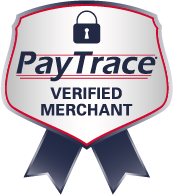While many businesses are flocking to the Internet to increase their presence and claim a piece of that infinite online commerce pie, there are still plenty of resistors to the movement. Most of those businesses and professionals aren’t doing so just to be stubborn: They genuinely fail to see the benefit of building a digital presence, and this usually ties back to how they generate a consumer base in the first place.
Business professionals like plumbers, handymen, local construction workers, dentists and even restaurants can struggle to see the value offered online. To them, a global audience is irrelevant; they are concerned with the consumer base in their immediate area, and they choose to focus on more direct ways to reach that audience. For a long time, this was a defensible strategy. But hyperlocal targeting online has created new opportunities that change the way consumers are reached. Instead of promoting your wares to the world at large, you can choose to focus on an extremely refined audience–including only those customers in your local area. Here’s a quick look at how it works.
The New Digital Frontier: Getting Small with Your Targeting
Every online user carries around identifying information that marketers use to target consumers. Location is an easy piece of information, and it’s getting more and more accessible thanks to mobile devices that feature location services.
When you run a marketing campaign online–whether it’s through social media, search advertising or other strategies–you can easily refine your targeting considerations to only display ads to consumers within certain geographic areas. This could be as broad as your country or state, or as narrow as cities, zip codes and even a pre-set area you have essentially drawn out on a map. In doing so, you achieve the same type of targeting that businesses have always preferred: local, relevant marketing that doesn’t waste ad dollars and unlikely consumers.
Building a Local Brand Online
These days, local branding is more than just having a physical store in your community. Online, businesses can easily cultivate their brand and build digital assets that will preserve its viability well into the future. Email campaigns are just one way to keep up with consumers who are in the area but may not see you often, if at all. These emails also remind those customers of your business, keeping your brand top-of-mind for when they need your products and services.
Meanwhile, hyperlocal reporting–which has come to rise through community blogs and the endurance of local newspapers–can serve as a valuable way of gaining free publicity and arranging ad partnerships.
Improving Real-Life Relationships Through a Digital Interface
Because of its high levels of engagement and its ease of use, social media has become a no-brainer for any business. On Facebook, for example, business pages have come to replace Yellow Pages business listings to a great extent. It’s easy to find a business’s information, including its location, hours of operation, contact info, even online ratings and customer reviews, all in one convenient place. Many local businesses also use social media to deliver promotions to followers on short notice.
Meanwhile, social media helps nurture customer relationships, which are vitally important to small businesses. Having a small, local consumer base can actually be a bonus on social media because it ensures you will have time to give every consumer they attention they want and need. And, you’ll be able to easily manage this without hiring extra help, if you are marketing on a limited budget.
Even the most local of businesses now have every reason to invest in online marketing. To get started, contact DBC Digital today.






